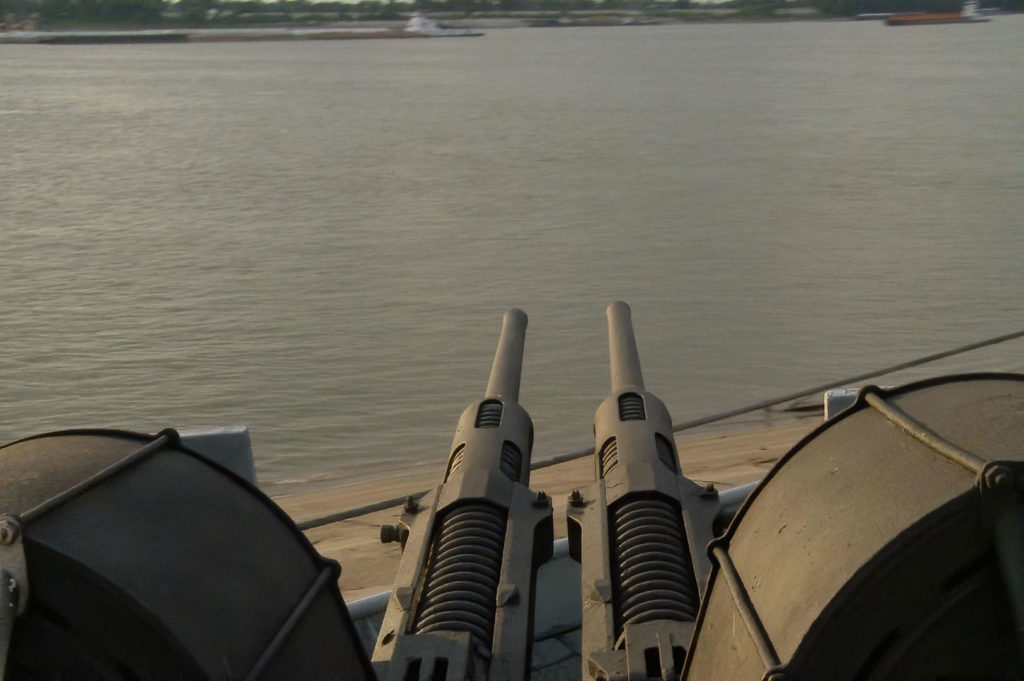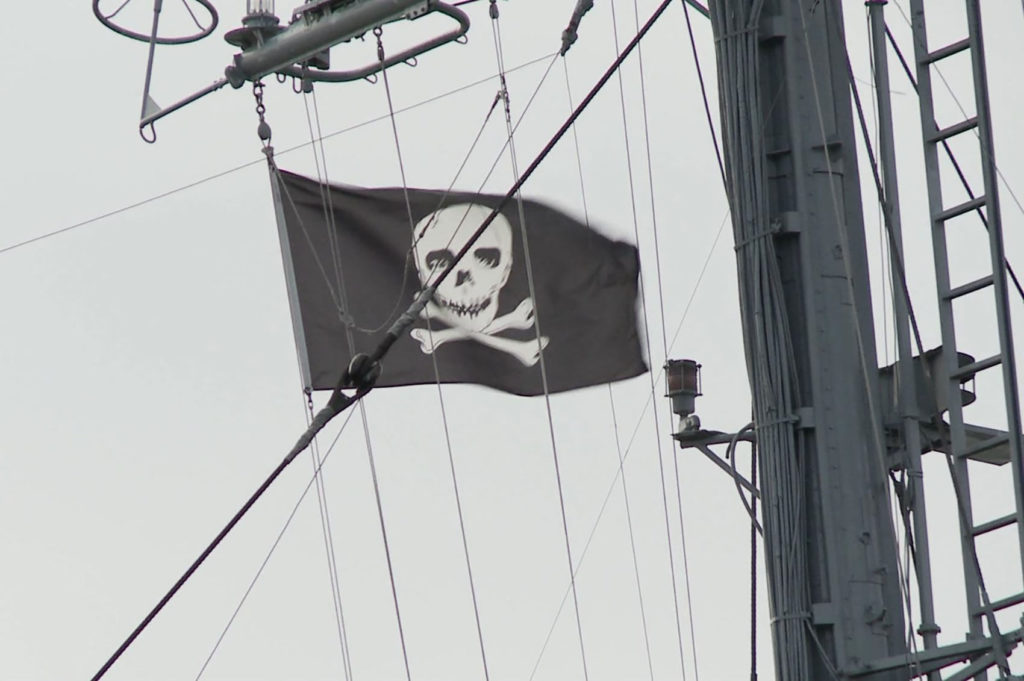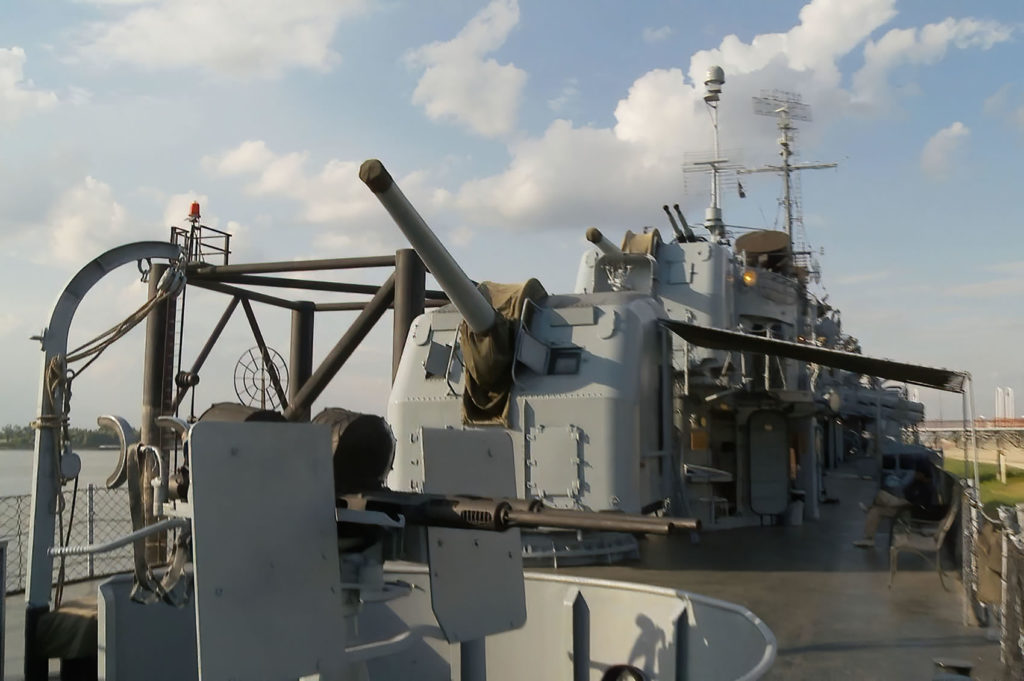This World War Two destroyer survived a direct hit by a Kamikaze airplane in the Battle of Okinawa. Today the Navy ship is a dockside museum in Baton Rouge.
If you’ve crossed the Mississippi River at Baton Rouge at any time over the last thirty years, you’ve probably noticed the navy destroyer that’s permanently docked on the riverbank. It’s the USS Kidd, War, a Fletcher-class destroyer, which was part of the Navy’s Pacific fleet in both World War Two and Korea. The USS Kidd was built in 1943 as the United States rushed to bolster its fleet as it battled the Japanese Imperial Navy.
The Kidd’s crew earned a total of eight battle stars and was involved in numerous World War Two battles. “That means nose to nose, or eyeball to eyeball or dirty fighting, you know, for three or four hours. And somebody’s going to get killed on there”, says Leroy Jenkins. He served on the USS Kidd in the 1950’s. He recalls the first time he saw the crew hoist the skull and bones of the Jolly Roger flag. “I get on this ship here and all these guys look like pirates themselves. These guys had long beards, big knives on their sides. I couldn’t believe it.”

The ship’s mascot, the notorious pirate Captain Kidd, is painted on the smoke stack. But the destroyer is really names after Navy Rear Admiral Isaac Kidd, the commander of the Battleship Arizona, who died in the attack on Pearl Harbor. Through his years of service on the Kidd, Jenkins never heard the story about the attack that nearly sank this destroyer in the Battle of Okinawa in World War Two.
Boyd Clements of Baton Rouge was there. “I was scared. I wasn’t nothing but a young boy. All my gun crew was crying.” Clements says he was the third crewman to board the USS Kidd in 1943, and the last man off after the war ended. At battle stations, Clements was inside the rear five-inch gun turret. That’s were he was during the fierce Battle of Okinawa, when the Japanese air force began sending thousands of suicide pilots against American ships in kamikaze attacks. As he watched the aerial combat overhead, Clements says he spotted a lone plane that was heading straight for the Kidd.

Clements recalls, “when the 40’s (40mm guns) started shooting at it, it was getting pretty close. Then when the 20s started shooting, it was really getting close. And that’s when she hit.” The suicide plane slammed into the side of the destroyer, exploding through the ship’s galley and its boilers, and then blasting its way out of the other side of the hull. Clements fights back tears as he recalls the carnage. “Some of them boys was coming up the ladder trying to get out of there and that steam killed them right away. All them boys was my friend. We was all close together, you know”. That single Kamikaze crash killed 38 of the Kidd’s crew. The explosions and the gaping holes nearly sank the destroyer, which struggled to get back to port.

The battle scars of the ship have healed. It now stands as a museum on the Baton Rouge Riverfront, telling a story of heroism of the young men who served under its famous flag.

The destroyer and a veterans museum are open daily. Visitors can stroll through the historic ship and get an idea of what it was like for the 300 plus sailors who manned its guns during numerous World War Two battles in the Pacific
305 South River Road, Baton Rouge, Louisiana


Garrett B Tarver
My father was a plank owner of the USS Kidd.
James G Tarver
I have heard the stories about the painting on the smoke stack being covered up by a tarp before going into port and then cutting off the tarp anytime the enemy was near.
Garrett B Tarver Galveston Island.